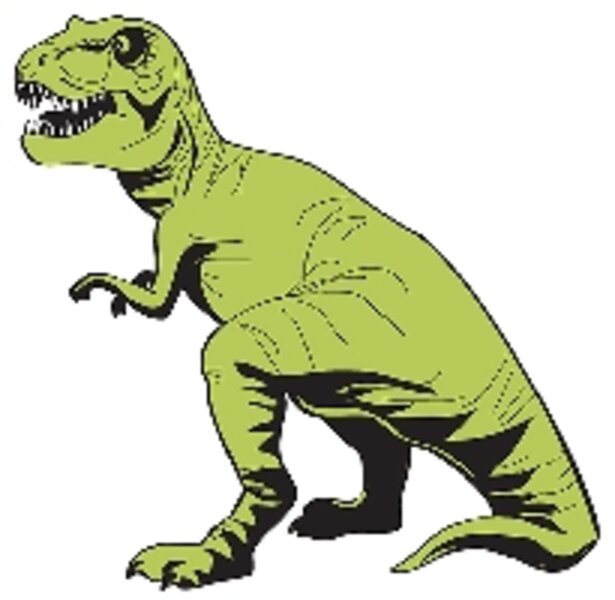Did asteroids really do in the dinosaurs?
Loading...
Sixty-five million years ago, a six-mile-wide asteroid slammed into what’s now the Yucatán Peninsula in Mexico. The impact, 2 million times more powerful than the largest nuclear bomb ever detonated, gouged out a 112-mile-wide crater and sent mega-tsunamis thousands of feet high in all directions.
Plumes of superheated, incandescent dust broiled the earth’s surface, igniting forest fires around the globe. Lingering, the dust probably blocked the sun for years – maybe decades – hindering photosynthesis and causing the food chain to collapse. Sixty-five percent of all living things disappeared.
For about 30 years, that’s been the story of how the dinosaurs’ 160-million-year reign came to an end. Now, two new controversial studies attempt to revise parts of this narrative.
The first, which appeared in the April 27 issue of Journal of the Geological Society, claims that, in fact, mass extinctions didn’t occur until perhaps 300,000 years after the asteroid impact.
The evidence: Marine sediments from around Mexico seem to show that 52 species present before the asteroid strike, a layer identified by blobs or spherules of melted glass, remained for quite some time after.
Princeton University’s Gerta Keller, a paleontologist who was lead author on the study, doesn’t dispute that the asteroid hit and that it hurt. “I’m sure the day after, they had a headache,” she says. But “we vastly overestimate the damage to the environment and to life that this Chicxulub impact had.”
Critics of Dr. Keller’s hypothesis – the majority of scientists in the field – remain unconvinced.
Most say that, given the physical upheaval caused by the cataclysm, geologic evidence from the immediate vicinity can’t be trusted. Tsunamis probably moved huge amounts of material, mixing it up. (Keller counters that the layered sediment she studied was clearly laid down over a long period.)
What’s more, says Brian Huber at the Smithsonian National Museum of Natural History in Washington, studies on sediments from farther afield show a direct correlation between mass extinction and impact. “Be careful of interpreting, particularly at ground zero,” he says.
Another study in the journal Paleontologia Electronica finds evidence that pockets of dinosaurs may have lived on after the asteroid strike. In the San Juan Basin – an area shared by Arizona, New Mexico, Colorado, and Utah – Jim Fassett, a scientist emeritus with the US Geological Survey in Santa Fe, N.M., has unearthed dinosaur bones that date to perhaps a half a million years after the impact.
They probably didn’t survive the asteroid strike there. “The San Juan Basin was pretty much devastated,” he says. Rather, he thinks they recolonized from areas farther away, like Alaska.
However they got there, chemical analysis indicates that dinosaurs were there after the end of the Cretaceous Period. Pollen from sandstone where Mr. Fassett unearthed the dinosaur bones is from plant species that belong to the Paleocene Epoch, which followed the Cretaceous Period.
The magnetic signature of the sandstone – a record of Earth’s magnetic field, which switches from time to time – also indicates that it was deposited later.
Could the bones themselves have come from elsewhere? Fassett measured trace elements in the bones. They, too, have a signature that’s distinct from the older layers below. “That would have been impossible to rework,” he says.





